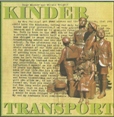
T. S. Eliot's" The Waste Land" aside, to me,
April is always the kindest month. It is the season of my natal day, and I'm apt
to spend the entire month in celebration. This year, the festivities began with
a visit to Descanso Gardens, which was at the height of Springtime beauty.
Camellias, Azaleas, Tulips, Daffodils, Lilacs, and Roses were all in fragrant
bloom.
That glad excursion was followed by a trip to Disneyland. As for over fifty
years, I flew through the air with Peter Pan, rode in a motorcar with Mr Toad,
and had a cup of tea with Alice. A particular pleasure was a sea voyage which
reminded me that, "It's a small world after all." That last never fails to warm
my heart with a spirit of fellowship.
The glow of that was still with me the next day, upon sitting to relax with a
cup of tea and a copy of "More" magazine, a journal for older ladies which says
it is for, "Women of Style and Substance." Well, being one of those creatures
who loves to play dress-up and lives in arid Southern California, I turned to a
fashion story titled "Desert Rose".
After seeing the first two pretty pictures, I came to the third, and gasped
aloud in shock. The red cocktail dress had nothing about it to cause such
dismay; so what was it? Each photo had a title, and that one was called, "Trail
of Tears".
How could anyone be so callous? A forced march which decimated the Cherokee
people reduced in significance to a line in a fashion story? Did they realize
that women on that doomed trek were deliberately wrapped in blankets
contaminated with smallpox? Had they seen so many twenty-dollar bills with
Andrew Jackson's face that they've forgotten the American genocide committed
under his aegis? Was ignorance possible from the editorial staff of a Meredith
publication, a company where even the administrative staff have college degrees?
I have no answers to any of these questions. Although I posted a letter
detailing my horror on the magazine web site, no reply has been received.
Indeed, though the magazine's circulation base is large, no other comment, save
mine, discusses the question. How can we heal the world amidst such uncaring?
On Monday at sundown, I will recline at table to commemorate my own deliverance,
and the start of another long march. The cause and ending of that experience are
different, but my people have known other marches with unhappy results.
As we rejoice in our freedom from slavery, let us remember those who are still
enslaved. As we recall the beginning of our forty-year march in the desert, let
us recall those whose journey did not end in the Promised Land. When we say,
"Let all who are hungry, come and eat with us," may our hearts invite others who
have suffered. As the door is opened for Elijah, let us pray that every home is
visited with peace.
Copyright 2011 Eddy Robey
Trail of Tears
The term “Trail of Tears” refers most specifically to the forced relocation
of more than 20,000 Cherokee from Northern Georgia to the Indian Territory,
which is now Oklahoma. At least 4,000 died due to exposure, disease and poor
provision over the 1200 mile march. A National Historical trail commemorates the
event, but the average American has only a vague understanding of what is at
least a haunting period of injustice, greed, racism, paternalism, and raw
inhumanity on the part of our United States Federal and several State
governments. The Indian Relocation Act of 1830 was the end product of a long
chain of Federal advocacy of relocation, forcibly championed by Andrew Jackson,
and applied in defiance of a Supreme Court ruling granting sovereign status to
Cherokees. The event is considered by many to have been a policy of genocide.
More generally the “Trail of Tears” refers to the successive relocation of the
“Five Civilized Tribes” of the Choctaw, Seminole, Creek, Chickasaw and Cherokee
nations. This history of each takes a different path, but all five tribes shared
the adoption of many cultural aspects of white society prior to being relocated.
These included original written languages, farming, and slave holding. Part of
the motivation for this partial assimilation was to blunt the demands for
encroachment of whites on their lands.
From 1830 to 1831 almost 17,000 Choctaws voluntarily agreed to relocate from
Alabama and Mississippi to the new Indian Territory, seeking freedom from
what they thought unjust in law. It was badly managed by white appointees,
resulted in between 2,500 and 6,000 deaths, and a chief described it as “a trail
of tears and death”.
Seminoles divided over what treaty was valid, chose to fight from 1832 to 1842.
After the unheard of government expense of $20,000,000 and 1000’s of deaths in
war, the 100 or so Seminoles that fled exile into the Florida Everglades were
the proud ancestors of the only recognized tribe that never was forced to sign a
treaty.
The removal of the Creek had started ten years earlier, but erupted in violence
in 1836 over defrauded allotments. Rather than have another war, most were
allowed to sell out. The Chickasaw were simply bought out by the Federal
Government and temporarily merged with the Creek in Indian Territory.
Pressure on Cherokee in Georgia included the Georgia Gold Rush. In 1835 the
Treaty of New Echota was signed by a small faction of about 100 Cherokee. The
treaty exchanged all claims east of the Mississippi River for land in the Indian
Territory and other promises. In the summer of 1838, the US Army enforced the
Removal Act and imprisoned the 14,000 Cherokee for most of two years prior to
the most famous “Trail of Tears”.
The view of the march is as varied as human character…involving extortion,
humanitarian missionary work, poor planning, ignorance of disease, and the
fundamental callousness of pushing the disenfranchised out of a land grab.
46,000 Native Americans gave up 25,000,000 acres in one of the most sordid
periods of American expansionism. By the time it was over, the more famous,
smaller, and later Indian Wars of the Old West were but a sideshow continuing a
pattern that was already set.
Copyright 2011 Carl B. David




 Bottom
Bottom














 Printer
frindly page
Printer
frindly page